I am trying to pick decoupling caps and ferrite beads to use in analog circuits powered by a DC/DC converter. The converter is a PDQE10-Q24-D9, which I am using because it can create a dual supply from a single supply input. The split supply is necessary for the sake of powering the analog circuits. When I look at the waveform of the noise coming from the switching regulator, I see a waveform like this: 
For my decoupling caps and ferrite beads I need a noise frequency to choose components. Should the noise frequency I use be given by the distance between closely spaced peaks, or by the vaguely AM-looking nature of this waveform. The following pictures of my scope and the cursor placement show what I mean.

